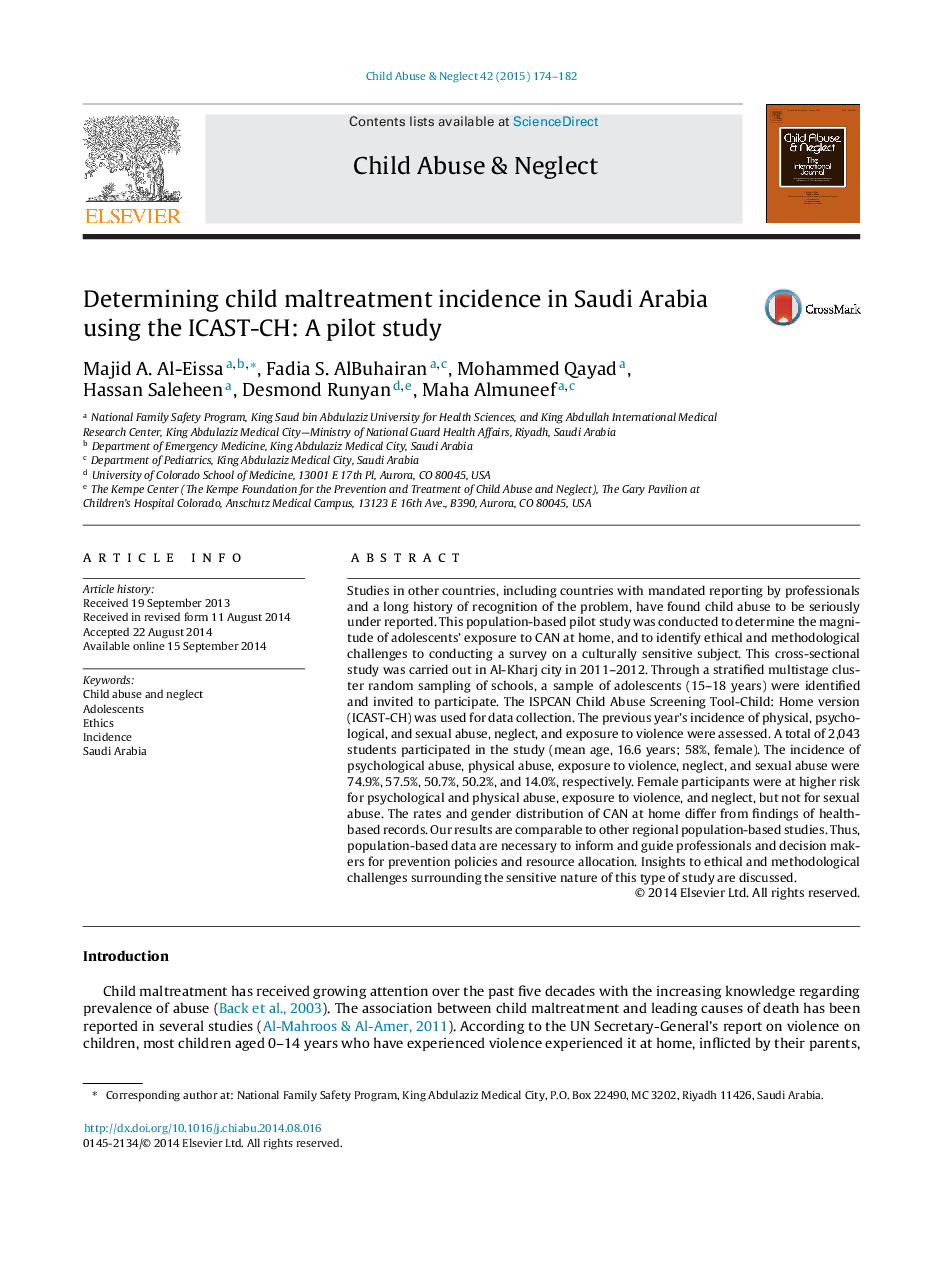| Article ID | Journal | Published Year | Pages | File Type |
|---|---|---|---|---|
| 6832663 | Child Abuse & Neglect | 2015 | 9 Pages |
Abstract
Studies in other countries, including countries with mandated reporting by professionals and a long history of recognition of the problem, have found child abuse to be seriously under reported. This population-based pilot study was conducted to determine the magnitude of adolescents' exposure to CAN at home, and to identify ethical and methodological challenges to conducting a survey on a culturally sensitive subject. This cross-sectional study was carried out in Al-Kharj city in 2011-2012. Through a stratified multistage cluster random sampling of schools, a sample of adolescents (15-18 years) were identified and invited to participate. The ISPCAN Child Abuse Screening Tool-Child: Home version (ICAST-CH) was used for data collection. The previous year's incidence of physical, psychological, and sexual abuse, neglect, and exposure to violence were assessed. A total of 2,043 students participated in the study (mean age, 16.6 years; 58%, female). The incidence of psychological abuse, physical abuse, exposure to violence, neglect, and sexual abuse were 74.9%, 57.5%, 50.7%, 50.2%, and 14.0%, respectively. Female participants were at higher risk for psychological and physical abuse, exposure to violence, and neglect, but not for sexual abuse. The rates and gender distribution of CAN at home differ from findings of health-based records. Our results are comparable to other regional population-based studies. Thus, population-based data are necessary to inform and guide professionals and decision makers for prevention policies and resource allocation. Insights to ethical and methodological challenges surrounding the sensitive nature of this type of study are discussed.
Related Topics
Health Sciences
Medicine and Dentistry
Perinatology, Pediatrics and Child Health
Authors
Majid A. Al-Eissa, Fadia S. AlBuhairan, Mohammed Qayad, Hassan Saleheen, Desmond Runyan, Maha Almuneef,
